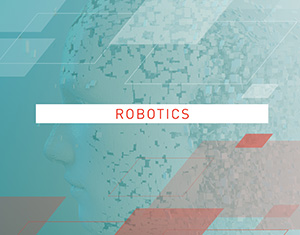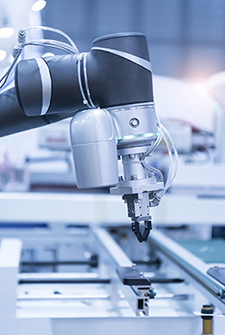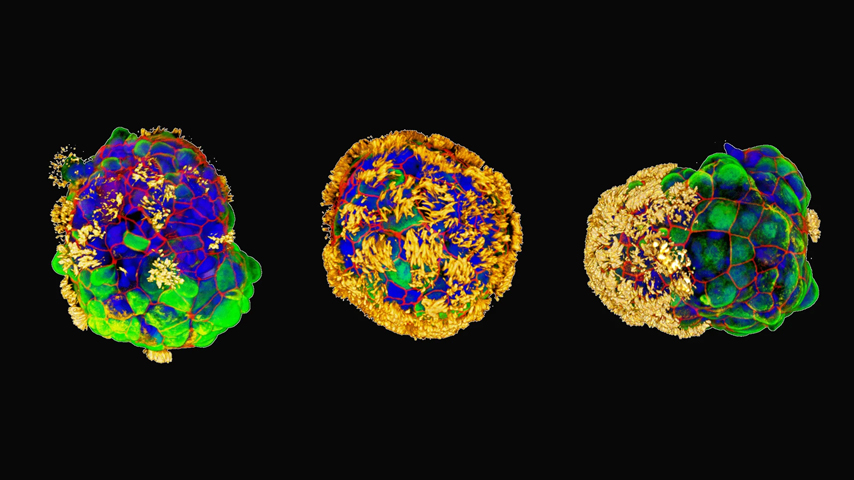ASME's Five Strategic Technologies: Robotics
ASME's Five Strategic Technologies: Robotics
This is the second in a series of ASME News articles on the Society’s five strategic technology focus areas: robotics, bioengineering, clean energy, manufacturing and pressure technology. This article will focus on ASME’s activities related to the topic of robotics.
Much like the area of manufacturing, which was the focus of an article in the last issue of ASME News, robotics was selected as an area where ASME and its products, programs and technical content could impact and possibly expedite industry solutions in the growing global robotics market.
ASME’s research community has long been involved in robotics through events such as the annual International Design Engineering Technical Conferences & Computers and Information in Engineering Conference (IDETC/CIE). This year’s event, to be held from Aug. 8-12 in Anaheim, Calif., will feature the Conference on Mechanisms and Robotics, now in its 43rd year, as well as 11 other conferences. In addition, the Society’s Dynamics Systems and Control Conference will be offered from Oct. 8-11 in Park City, Utah. The technical program typically covers the modeling, simulation, analysis, design and control of dynamic systems. Conference topics include control theory, industrial applications and innovations in dynamic systems and control education.
With ASME’s growing presence in the research community, the Society now aims to expand its presence in manufacturing applications for robotics. According to the International Federation of Robotics, the global market for robotics systems for manufacturing was $40 billion in 2016. Within that arena, the area of robotics for pipeline and plant inspection and maintenance — including drones, robot crawlers and submersibles — accounted for $1.7 billion in 2016 and was expected to increase to $3.7 billion by 2021.
That projected growth, along with ASME’s long-standing ties to the oil and gas arena, made robots for inspection a useful first entry point for the Society in the industry events landscape, according to Raj Manchanda, ASME’s business development director for robotics and manufacturing. “ASME has served the petroleum sector for many years,” he said. “Plant owners now realize the benefits of conducting inspections using UAVs — improving personnel safety, eliminating associated expenses with scaffolding, and reducing plant downtime.”
Launched last year, ASME’s Robotics for Inspection and Maintenance event was designed for engineers and business professionals in the oil and gas, pipeline and power generation industries who could meet and interact with robotics experts and learn how their businesses could deploy robotics technologies for inspection and maintenance. The Society’s second Robotics for Inspection & Maintenance conference, to be held Sept. 24-25 in College Station, Texas, will feature companies presenting live demonstrations of their robotic solutions as well as experts discussing the latest in robotic/drone, data analytic and artificial intelligence technologies for performing asset inspections and maintenance more quickly, safely and effectively. John Lizzi, executive leader for robotics at GE Energy, will be the event’s keynote speaker. Seating is limited. For more information or to reserve a seat, visit https://event.asme.org/Robotics.
ASME Standards & Certification (S&C) has also been extremely active on the robotics front lately. In addition to the recent approval of a new Robotic Arm Performance Standard Committee, S&C also recently formed a new Mobile Unmanned Systems Standards Committee and a Special Working Group on the Use of Unmanned Aerial Vehicles/Systems for Inspection. A Special Working Group on the Use of Crawlers/Ground Robotics for Inspection is also being established. In addition, the B30 Crane Safety Standards Committee has also been working on two standards: B30.32 Unmanned Aircraft Systems Used in Inspection, Testing, Maintenance and Lifting Operations and the B30.31 Self-Propelled, Towed or Remote Controlled Hydraulic Platform Transporters.
Examples of other robotics-related endeavors underway at ASME include:
- The upcoming publication of Precision Programming of Roving Robots and the recent release of Mechanics of Accuracy in Engineering Design of Machines and Robots, Volumes 1 and 2 and Robot Manipulator Redundancy Resolution;
- The publication of Mechanical Engineering magazine’s Robotics Special Report last August and the launch of the magazine’s Emerging Technology Robotics Award program recognizing engineering excellence in the five strategic technology areas; and
- The publication this fall of a special issue of the ASME Journal of Mechanisms and Robots addressing topics related to mechanisms and robots for safe human-robot physical interaction.
Other robotics-related products and initiatives are also in development at ASME. Be sure to check forthcoming issues of ASME News for further updates.
For more information, or to become involved in any of the above activities, contact robotics@asme.org.





